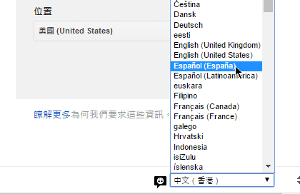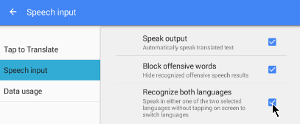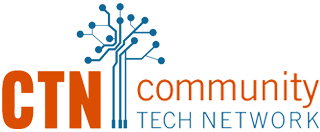Becoming digitally literate can be a long journey for many learners. It can seem like an impossible one to those who speak limited or no English.
However, thanks to technology, it has never been easier to eliminate this barrier to digital access. Here are five ways you can increase the effectiveness in which you teach digital literacy as a trainer.
Adjust Language Display Settings on Websites
Many of the major social media websites have settings, typically located in a footer, where display language can be changed.

Adjusting the display language at the bottom right of the Gmail account creation page, for example, allows the learner to more quickly complete the fields as you guide them from a separate device set to display English.
The Facebook setting is located in the footer of one of the columns, where commonly used languages are displayed horizontally. A drop-down menu in the bottom-right corner of the footer lets you expand beyond the common languages.
Use Google Translate to Communicate
Google’s excellent Translate app allows you to have instant and nearly real-time conversations with the learner.

The capability to recognize both languages was recently added by Google, enabled by default after updating. This allows you to speak a question naturally in English — while it gets translated and read to the learner — who can then instantly respond in their native language.
The drawback is that the translations are not always 100 percent accurate, but the speech input gathered from over 100 million users constantly serves to tweak the algorithms involved.
Use Multiple Devices Set to Different Languages
Walking learners through any lengthy and technical process can be challenging, especially if you can’t read the menu buttons and icon labels.
If you use multiple devices running the same operating system, you can demonstrate the steps involved on one device set to English, and learners can follow along and take notes on their own devices set to their native language.
The locations of language setting menus can also be learned by repeatedly changing the display language via Settings > Language & Input > Language on Android, and via Settings > General > Language & Region > Device Language on iOS.
Open Pages Using Google Chrome
There are numerous reasons why Chrome continues to grow in popularity. One feature has been around for many versions, and happens to be a great way for learners to read content not written in their native language.

Chrome’s built-in translator checks the language of pages after loading — if a language different from Windows’ system language is detected, an icon appears in the address bar that allows you to translate the entire page.
Use Other Learners Eager to Assist
Do you remember the first time you learned something that was either amazing or difficult to learn? Was it riding a bike or learning to play the piano? Weren’t you both proud and eager to let all your friends know when you passed a daunting milestone?
Learning has the potential to impact your students in that same, exact, infectious way.
Ask for assistance from those that seem willing to help! This instills confidence in their ability to apply newly learned skills, while spreading digital literacy at a higher rate of efficiency.
Share Your Thoughts, Make a Difference
What are your methods, tricks, or ideas on tackling this barrier? Share your thoughts by tweeting @ctnbayarea. Not yet making a difference with us? Volunteer now and get started!


Comments are closed.